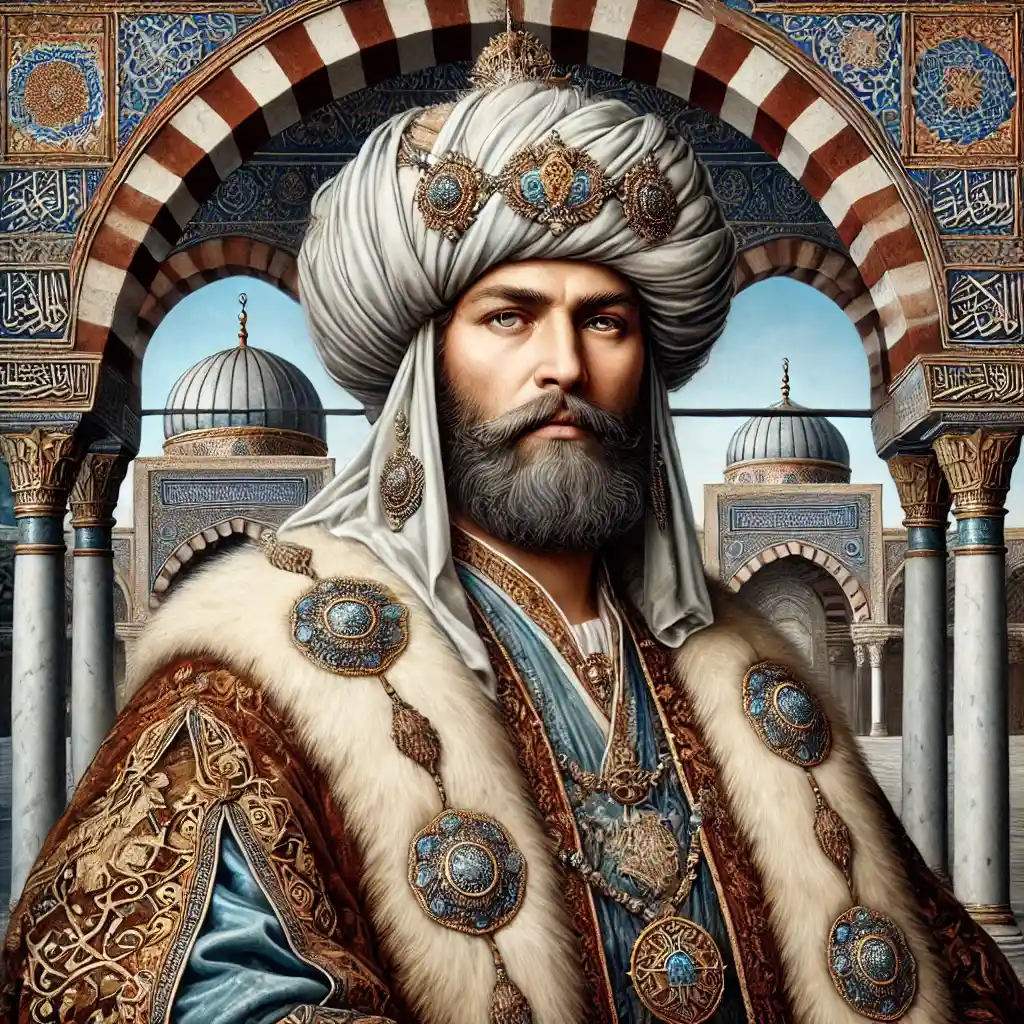Osmanlı İmparatorluğu'nun dördüncü padişahı olan Yıldırım Bayezid, 1389-1402 yılları arasında tahtta bulunmuş ve gerek askeri başarıları gerekse yönetim yetenekleri ile Osmanlı tarihinin en dikkat çeken isimlerinden biri olmuştur. Yıldırım Bayezid, Anadolu'da siyasi birliği sağlama çabaları ve Balkanlarda kazandığı zaferlerle tanınmıştır. Ancak hükümdarlığı, 1402 yılında Ankara Savaşı'nda Timur'a karşı aldığı mağlubiyetle sona ermiştir. Şimdi onun hayatını detaylı olarak inceleyelim.
Yıldırım Bayezid, also known as Bayezid the Thunderbolt, was the fourth Sultan of the Ottoman Empire, reigning from 1389 to 1402. Born in 1360 in Edirne, he was the son of Sultan Murad I and Gülçiçek Hatun. His reign was marked by both impressive military conquests and significant challenges, including the pivotal defeat at the Battle of Ankara in 1402. Bayezid’s leadership left a lasting impact on Ottoman history, as his bold strategies and ambitious reforms reshaped the empire.
Early Life and Family Background
Birth and Heritage
Yıldırım Bayezid was born into a period of rapid Ottoman expansion. His father, Sultan Murad I, was a transformative leader, and his mother, Gülçiçek Hatun, played a crucial role in his upbringing. Bayezid inherited his father's military acumen and his mother's strong will, traits that would define his rule.
Education and Training
Bayezid received a comprehensive education in governance, military tactics, and Islamic jurisprudence. He was trained by prominent scholars and military commanders of the era, ensuring he was well-equipped to lead the empire.
Early Military Career
Before ascending the throne, Bayezid gained experience as a military commander. He was instrumental in key Ottoman victories, including the Battle of Kosovo in 1389, where he earned the nickname "Thunderbolt" for his swift and decisive attacks.
Family Dynamics
Bayezid’s relationships with his siblings were often contentious, as competition for power was fierce. However, his father’s confidence in his abilities positioned him as the most suitable heir.
Inheritance of a Growing Empire
When Bayezid ascended the throne in 1389, the Ottoman Empire was on the cusp of becoming a dominant power. His challenge was to sustain this momentum while navigating both internal and external threats.
Military Campaigns
Conquests in Anatolia
One of Bayezid’s primary goals was to consolidate Ottoman control over Anatolia. He launched a series of campaigns against independent Anatolian beyliks, successfully bringing most of the region under Ottoman rule.
Balkan Expansion
In the Balkans, Bayezid continued the aggressive expansion policies of his predecessors. He secured key victories, including the siege of Nicopolis in 1396, where a coalition of European powers was decisively defeated.
Naval Aspirations
Bayezid recognized the importance of naval power and worked to strengthen the Ottoman fleet. His efforts laid the groundwork for the future dominance of the Ottomans in the Mediterranean.
Military Innovations
Under Bayezid’s leadership, the Ottoman military adopted new strategies and tactics. His use of swift cavalry units and disciplined infantry reshaped the empire’s approach to warfare.
Challenges in Military Campaigns
Despite his successes, Bayezid faced significant challenges, including resistance from both local rulers in Anatolia and European coalitions. His ability to adapt to these challenges demonstrated his strategic genius.
Administrative Reforms
Centralization of Power
Bayezid worked tirelessly to centralize power within the empire. He reduced the influence of local rulers, ensuring that the sultan’s authority was absolute.
Legal Reforms
He implemented legal reforms to ensure justice and fairness throughout the empire. These reforms strengthened the central administration and reinforced the loyalty of his subjects.
Economic Policies
Bayezid introduced economic policies that promoted trade and stabilized the empire’s finances. His efforts to improve infrastructure, including roads and marketplaces, facilitated economic growth.
Religious and Cultural Contributions
A devout Muslim, Bayezid supported the construction of mosques and madrasas. His patronage of Islamic institutions reinforced the empire’s religious identity.
Relations with Non-Muslims
Bayezid’s policies towards non-Muslim subjects were pragmatic. He ensured that their rights were protected, fostering loyalty among diverse populations within the empire.
The Battle of Ankara and Decline
Timur’s Invasion
The greatest challenge of Bayezid’s reign came in 1402, when Timur invaded Anatolia. The two forces clashed at the Battle of Ankara, resulting in a catastrophic defeat for the Ottomans.
Bayezid’s Capture and Death
Following the battle, Bayezid was captured by Timur. He died in captivity in 1403, marking a tragic end to his illustrious career.
Consequences for the Empire
Bayezid’s defeat led to a period of instability known as the Ottoman Interregnum, during which his sons vied for control of the throne.
Historical Interpretations
Historians view the Battle of Ankara as a turning point in Ottoman history. While it was a setback, the empire eventually recovered and continued its ascent.
Bayezid’s Legacy
Despite his tragic end, Bayezid’s contributions to the Ottoman state, including his military conquests and administrative reforms, left a lasting legacy.
Conclusion
"Yıldırım Bayezid Biyografisi" başlığı altında, Osmanlı İmparatorluğu'nun dördüncü padişahı olan Yıldırım Bayezid’in hayatını, başarılarını ve zorluklarını inceledik. Onun liderliği, Osmanlı’nın yükselişine ve devlet yapısının güçlenmesine büyük katkılar sağlamıştır.
Summary
- Yıldırım Bayezid (1360-1403) was the fourth Sultan of the Ottoman Empire, known for his military conquests and administrative reforms.
- His reign saw significant territorial expansions in both Anatolia and the Balkans.
- Bayezid centralized power, reduced the influence of local rulers, and introduced economic and legal reforms.
- He supported the construction of mosques and madrasas, promoting Islamic culture and education.
- His most significant military achievement was the defeat of a European coalition at Nicopolis in 1396.
- However, his reign ended tragically with the defeat at the Battle of Ankara in 1402 and his subsequent captivity by Timur.
- Bayezid’s death led to a period of instability, but his legacy endured as a foundation for the empire’s future successes.
- His bold strategies and ambitious reforms reshaped the Ottoman state, leaving an indelible mark on its history.



